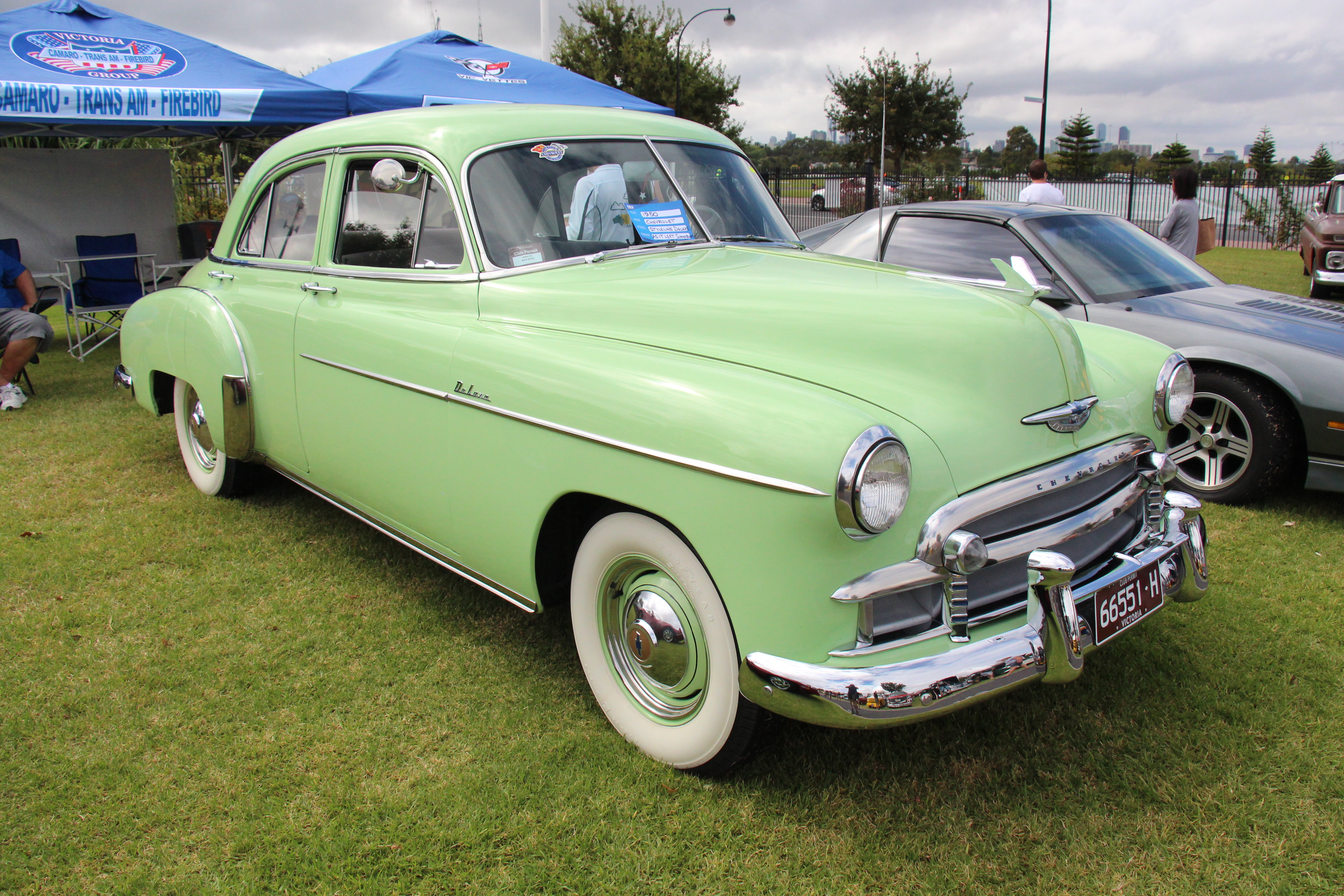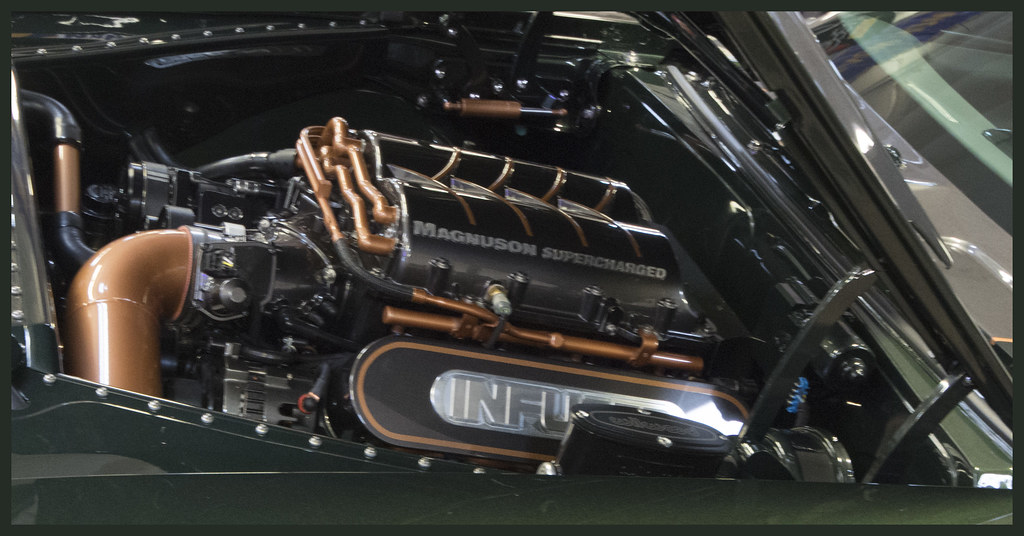
The 1950s automobile industry was a vibrant era filled with groundbreaking innovation, experimentation, and daring design choices that shaped the future of cars. Among the remarkable vehicles that captivated both car enthusiasts and everyday drivers, the 1954 Chevrolet Corvair concept shines brightly as a pivotal moment in automotive history. First introduced during the Motorama traveling exhibition, this ambitious fastback model, inspired by the Corvette, promised to usher in a new age for compact cars in America, embodying a blend of style and engineering prowess.
The Corvair’s design was revolutionary, as it strayed from conventional norms of the time. The hardtop fastback-styled roof not only provided an appealing aesthetic but also showcased Chevrolet’s willingness to embrace new engineering concepts. The vehicle was born out of the vision of Ed Cole, who was the chief engineer of the Chevrolet Motor Division and later became a key player in the overall development of the Chevrolet brand. His foresight positioned the Corvair as a response to the growing popularity of compact cars, particularly the Volkswagen Beetle, which was making waves in the American market.
Corvair’s engineering underpinnings
Unveiling the Corvair’s engineering underpinnings reveals a commitment to innovation. Unlike the traditional front-engine designs prevalent in American cars, the Corvair featured a rear-engine layout, which not only provided a unique driving experience but also allowed for more spacious interior arrangements. The air-cooled flat-six engine, a hallmark of the Corvair, was a significant departure from Chevrolet’s traditional engine offerings. This engine was designed to be lightweight and efficient, incorporating many components made from aluminum. This focus on weight reduction was crucial for improving fuel efficiency, a growing concern among consumers at the time.

Another major advancement was the incorporation of independent suspension on all four wheels. This design choice enhanced ride quality and handling, making the Corvair a more appealing option for drivers who valued performance. The independent suspension system was a feature that would later be adopted by many other manufacturers, exemplifying Chevrolet’s role in pushing the automotive envelope.
The Corvair concept car’s introduction garnered considerable attention, with audiences and critics alike praising its fresh engineering and design. Time magazine even featured the vehicle on its cover, celebrating the Corvair as a beacon of innovation in the automotive landscape. The excitement surrounding the concept eventually led to the production of the first-generation Corvair, which was rolled out in 1960 and continued to evolve through 1969.
The first-generation Corvair was introduced with a variety of body styles, including a 4-door sedan, a 2-door coupe, and a convertible, showcasing Chevrolet’s innovative approach. This wide range of options allowed the Corvair to cater to families, young professionals, and performance lovers, securing its place in the market. With around 1.8 million units produced during its decade-long production span, the Corvair highlighted a strong consumer interest in compact vehicles that fused cutting-edge engineering with fashionable designs.

Legacy is intertwined with controversy
However, the Corvair’s legacy is also intertwined with controversy. Ralph Nader’s book, “Unsafe at Any Speed,” famously criticized the vehicle, highlighting safety concerns regarding its handling. Although these criticisms were later tempered by studies showing that the Corvair’s handling was comparable to other contemporary compacts, the narrative surrounding the car had already taken hold, impacting its reputation. This dichotomy—between innovative engineering and safety concerns—fuels the ongoing debates among car enthusiasts and collectors today.
Despite the challenges it faced, the Corvair has cultivated a devoted following among collectors and enthusiasts. The vehicle’s role as a pioneer in the compact car segment remains undeniable, and its unique engineering solutions have left an indelible mark on the industry. Collectors often celebrate the Corvair not just for its design and performance, but also for its place in automotive history as a symbol of American ingenuity and courage in the face of consumer expectations.
As we look back on the 1954 Chevrolet Corvair concept, it is essential to appreciate both its ambitious aspirations and the challenges it encountered. The Corvair’s innovative spirit and design principles paved the way for future Chevrolet models and compact cars at large, making it much more than just another automobile from the 1950s. It embodies a remarkable chapter in America’s automotive narrative, one that continues to intrigue and inspire car lovers around the world.

As we dive into the legacy of the Chevrolet Corvair, it’s impossible not to marvel at how this compact car has made waves in the automotive world since its inception in the early 1960s. The Corvair, heralded as a groundbreaking vehicle, not only introduced Americans to a new era of compact cars but also sparked intense debates that would last for decades. Its design and engineering innovations were revolutionary for the time, but the controversies surrounding its safety have shaped conversations about automobile design and consumer protection for years to come.
The impact of the Corvair extends beyond its initial sales figures and engineering feats. The vehicle was a response to the growing demand for smaller, more efficient cars in the United States, a trend initially spearheaded by the European Volkswagen Beetle. Chevrolet understood this shift and strategically positioned the Corvair to cater to a diverse audience. The Corvair’s versatility was evident in its various body styles, including sedans, coupes, convertibles, and even station wagons. This adaptability allowed the Corvair to appeal to a wide range of customers—from families looking for practicality to young professionals seeking a stylish and economical ride.
Production numbers reflect the Corvair’s initial success. With around 1.8 million units produced from 1960 to 1969, the Corvair became one of Chevrolet’s best-selling models. Its sales peaked in the early 1960s, as consumers were drawn to its unique rear-engine layout and fuel efficiency. The Corvair offered something different in a market saturated with traditional front-engine vehicles. Enthusiasts often refer to the Corvair as a “poor man’s Porsche,” praising its spirited performance and engaging driving dynamics that set it apart from competitors.

However, the dynamic landscape of the 1960s brought fierce competition, not just from American car makers but also from international imports. The emergence of the Ford Mustang in 1964 represented a new wave of sporty coupes that began to draw attention away from the Corvair, making it increasingly difficult for the model to keep pace with shifting consumer preferences. As the decade advanced, sales for the Corvair began to decline, prompting Chevrolet to reassess its marketing strategies to stay relevant in a fast-evolving market.
One of the major turning points in the Corvair’s legacy came with Ralph Nader’s book “Unsafe at Any Speed,” published in 1965. Nader’s critique focused on the Corvair’s handling and safety features, effectively igniting a firestorm of controversy. While subsequent studies, including a 1972 report by Texas A&M, showed that the Corvair’s handling was comparable to other compact cars of the era, the damage to its reputation had already been done. The narrative of the Corvair as an unsafe vehicle lingered, influencing public perception and sales for years.
A resurgence in interest and appreciation
Despite the challenges, the Corvair cultivated a devoted fan base that celebrated its innovative engineering and striking design. Collectors and car enthusiasts treasure the Corvair for its unique features, such as the air-cooled engine and rear-engine layout, which have become defining attributes of its identity. Today, vintage Corvairs command impressive prices at auctions, reflecting a growing appreciation for this groundbreaking vehicle and its storied past.

The Corvair’s influence extends far beyond its production years, leaving a lasting mark on automotive innovation. Many engineering principles first established by the Corvair paved the way for future compact car designs, showcasing its forward-thinking approach. Its remarkable suspension system, rear-engine configuration, and clever use of lightweight materials were revolutionary for their time, inspiring countless generations of automotive designers and engineers to push the boundaries of what is possible.
Reflecting on the Chevrolet Corvair’s journey through the years reveals its multifaceted impact on the automotive world. From groundbreaking design and engineering to its controversial reputation and eventual cult following, the Corvair stands as a symbol of the challenges and triumphs within the automotive industry. It encapsulates the essence of innovation and the complexities of consumer perception, marking a significant chapter in the annals of American automotive history.
In the grand scheme of automotive design and consumer expectations, the Corvair represents a microcosm of the struggles and triumphs faced by manufacturers in an ever-evolving landscape. Its story is one of ambition, creativity, and resilience—a narrative that continues to resonate with car enthusiasts and collectors around the globe. The legacy of the Chevrolet Corvair is not merely a reflection of its time, but a lasting influence that continues to inspire automotive innovation and passion.

Looking ahead, the legacy of the Corvair continues to captivate automotive historians and enthusiasts alike. As we ponder the valuable lessons learned from its history, the importance of safety, innovation, and consumer engagement in the car industry becomes crystal clear. The Corvair’s story serves as a poignant reminder that while vehicles come and go, the enduring spirit of innovation and the relentless pursuit of excellence in design will always remain. The 1954 Chevrolet Corvair concept was not just a car; it was the catalyst for a remarkable journey that forever altered the landscape of compact cars and left an indelible mark on the automotive sector.
Related posts:
Chevrolet Corvair
1954 Corvette Corvair: The Coolest Car That No Longer Exists!
Corvettes for Sale: 1954 Corvette Corvair Motorama Recreation Offered at Auction




